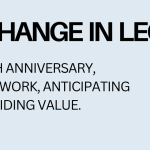Thomson Reuters today (12 July) unveils its next generation Practical Law Dynamic Tool Set, which includes five new features including semantic search – a departure for the first time from key word search, meaning it will surface the most relevant content more quickly. The new tool set also includes the ability to visualise search results within a knowledge map; to customise matter maps; to quickly create charts to visualise and compare search results across sectors or jurisdictions; and to visualise and compare market trends.
Practical Law provides practice notes and how-to guidance, plus standard documents from subject matter experts that come from law firms and chambers across the globe.
The new dynamic search functionality provides answers to legal research questions based on natural-language inquiries, along with links to relevant Practical Law content. Speaking to Legal IT Insider, senior director of product management, Erica Kitaev said: “Users already use natural language questions to get to an answer and sometimes that’s where it ends, but frequently that is where it really starts, and that answer launches you to the next point. Now when you type a natural language question, the machine learning algorithm developed by Thomson Reuters Labs and trained by our subject matter experts will crawl the content and find the most relevant answer. What is special is that it has been trained for Practical Law content by our subject matter experts, so users know it’s a source they can trust.”

She adds: “The algorithm will also kick-in in multiple ways into the content and give suggested questions: it’s about taking you to the next step and saving time.”
The knowledge map enables users to visualise the search results, which appear as bubbles that expand further to show related content when you click on them. Kitaev says: “PLC already has related content placed by our attorney editors based on the content you are looking at. It’s a flat list and we thought we could help customers get more out of it by creating a knowledge maps, which shows icons with the different bubbles with different content in. If you click on the bubble the map expands to bring up related content and help users to move more quickly. But the special sauce is the Practical Law expertise.”
Quick compare allows Practical Law users to create charts that evaluate key questions or concepts across jurisdictions. Users can leverage pre-built charts, or build and customize their own according to jurisdiction, topic or data point. Kitaev said: “We do have comparison content today in the form of static charts but it’s not customisable or editable. Now users can build and save a chart to provide insights at a glance to orient them before taking a deeper dive. If there has been an update to the law, it will automatically update in the chart.”

While interactive matter maps have been available for a few years, they are now customisable to the user’s workflow, which means that users can build their own map and skip tasks that they don’t need. They provide an overview of the phases and core tasks necessary for the planning, management and execution of a legal matter – which is very useful if you are driving towards standardisation in order to automate your processes.
Finally, the new what’s market analytics allows users to easily explore market trends, and instantly create data-driven insights and visualizations, such as charts and graphs of key terms in documents and agreements or comparisons of recent filings.

“By putting AI, analytical tools and proprietary visual navigation technologies in service to our attorney- authored content, we’ve created entirely new capabilities to help our customers thrive during this time of rapid change,” said Paul Fischer, president of the legal professionals segment of Thomson Reuters. “Practical Law Dynamic Tool Set has become our latest cairn, marking our path to becoming a true content-driven technology company.”
“We’ve taken what we’ve learned from nearly three decades of AI enablement and specifically tuning our technology to attorney-authored content in Westlaw Edge and applied it to a new proprietary editorial content set from Practical Law,” said Isabelle Moulinier, vice president and AI lead at Thomson Reuters Labs. “With more attorneys working remotely, the trusted advisor down the hall isn’t always there anymore, and legal professionals are relying on technology to provide that know-how and find the expert within themselves, supported by AI and data-driven insights.”









